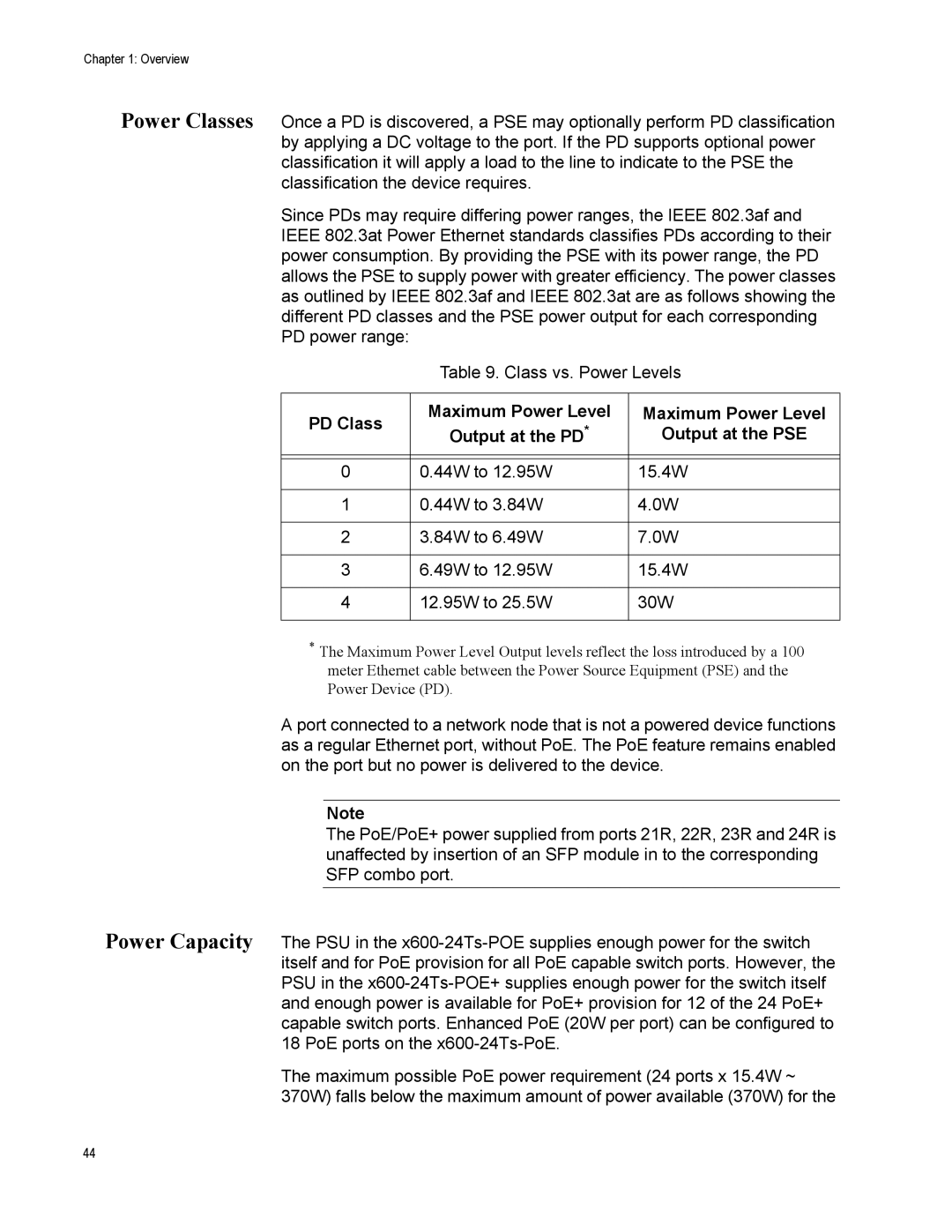
Chapter 1: Overview
Power Classes Once a PD is discovered, a PSE may optionally perform PD classification by applying a DC voltage to the port. If the PD supports optional power classification it will apply a load to the line to indicate to the PSE the classification the device requires.
Since PDs may require differing power ranges, the IEEE 802.3af and IEEE 802.3at Power Ethernet standards classifies PDs according to their power consumption. By providing the PSE with its power range, the PD allows the PSE to supply power with greater efficiency. The power classes as outlined by IEEE 802.3af and IEEE 802.3at are as follows showing the different PD classes and the PSE power output for each corresponding PD power range:
Table 9. Class vs. Power Levels
PD Class | Maximum Power Level | Maximum Power Level | |
Output at the PD* | Output at the PSE | ||
| |||
|
|
| |
0 | 0.44W to 12.95W | 15.4W | |
|
|
| |
1 | 0.44W to 3.84W | 4.0W | |
|
|
| |
2 | 3.84W to 6.49W | 7.0W | |
|
|
| |
3 | 6.49W to 12.95W | 15.4W | |
|
|
| |
4 | 12.95W to 25.5W | 30W | |
|
|
|
*The Maximum Power Level Output levels reflect the loss introduced by a 100 meter Ethernet cable between the Power Source Equipment (PSE) and the Power Device (PD).
A port connected to a network node that is not a powered device functions as a regular Ethernet port, without PoE. The PoE feature remains enabled on the port but no power is delivered to the device.
Note
The PoE/PoE+ power supplied from ports 21R, 22R, 23R and 24R is unaffected by insertion of an SFP module in to the corresponding SFP combo port.
Power Capacity The PSU in the
The maximum possible PoE power requirement (24 ports x 15.4W ~ 370W) falls below the maximum amount of power available (370W) for the
44
